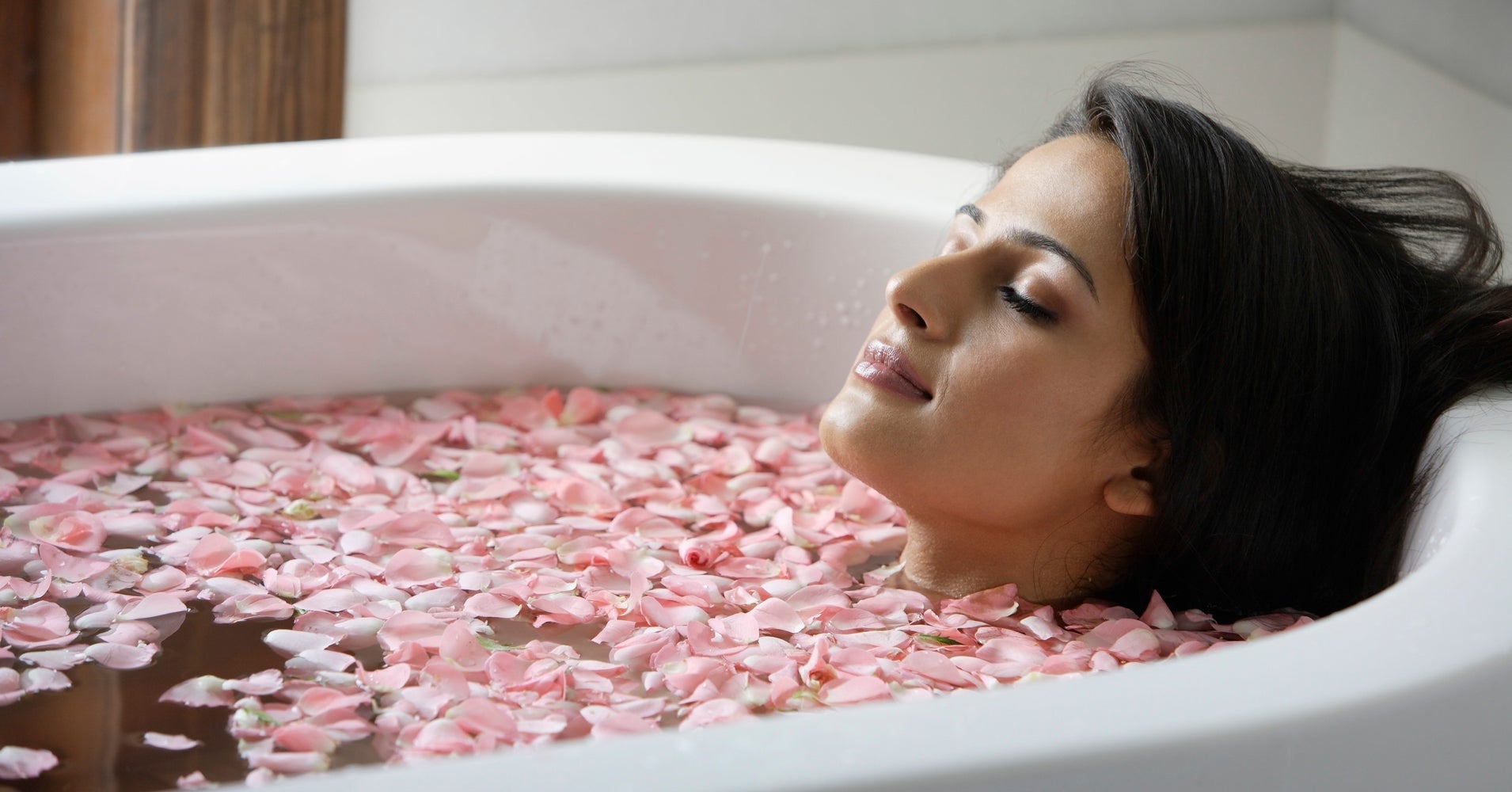Step into the captivating world of the Lady in the Bath plant, where beauty and medicinal properties intertwine. This unique plant, with its striking foliage and delicate flowers, has captivated gardeners and herbalists alike for centuries. Let’s explore the enchanting world of the Lady in the Bath plant, uncovering its secrets and discovering its remarkable versatility.
From its botanical characteristics to its cultivation requirements, medicinal uses, and ornamental value, we delve into every aspect of this fascinating plant. Join us on this journey of discovery as we unveil the secrets of the Lady in the Bath plant.
Botanical Characteristics of the Lady in the Bath Plant

The Lady in the Bath plant (Saxifraga stolonifera) is a captivating species known for its unique foliage and captivating growth patterns. Its botanical characteristics make it a fascinating subject for plant enthusiasts and horticulturalists alike.
The Lady in the Bath plant features an attractive rosette of rounded, scalloped leaves. These leaves are a vibrant shade of green, often with silver or cream-colored markings. The plant’s growth pattern is truly remarkable, with long, trailing stolons (runners) that extend outward from the main plant. These stolons produce new plantlets at their tips, giving the plant a cascading effect.
Flowers, Lady in the bath plant
The Lady in the Bath plant produces delicate, star-shaped flowers. These flowers are typically white or pale pink in color and bloom in clusters atop slender stalks. The blooming period typically occurs during the spring and summer months, adding a touch of elegance to the plant’s overall appearance.
Hardiness Zones and Growing Conditions
The Lady in the Bath plant is a versatile species that can thrive in various climates. It is generally hardy in USDA hardiness zones 4 to 8, making it suitable for cultivation in a wide range of regions. The plant prefers well-drained soil and partial to full shade. It is also relatively low-maintenance, making it an excellent choice for novice gardeners.
Cultivation and Care of the Lady in the Bath Plant

The Lady in the Bath plant, known for its distinctive foliage and cascading growth habit, requires specific care and cultivation practices to thrive. Understanding its optimal soil conditions, watering needs, and propagation methods is crucial for maintaining its health and beauty.
Soil Conditions
The Lady in the Bath plant prefers well-draining, slightly acidic soil with a pH range of 5.5 to 6.5. A mixture of peat moss, perlite, and vermiculite provides the ideal balance of moisture retention and drainage. Avoid using heavy, clay-based soils that can suffocate the plant’s roots.
Watering Requirements
The Lady in the Bath plant has moderate watering needs. Allow the soil to dry out slightly between waterings to prevent root rot. During the growing season, water thoroughly and regularly, especially during hot, dry weather. Reduce watering during the winter months when the plant enters a dormant state.
Propagation
Propagating the Lady in the Bath plant can be done through cuttings or division. To propagate through cuttings, take a healthy stem with several leaves and place it in a pot filled with moist potting mix. Keep the cutting warm and humid, and it will develop roots within a few weeks.
Division is another effective method of propagation. Carefully divide the plant into smaller sections, ensuring each section has a healthy root system. Plant the divisions in separate pots filled with fresh potting mix.
Pest and Disease Prevention
The Lady in the Bath plant is generally pest-resistant, but it can be susceptible to aphids, mealybugs, and spider mites. To prevent these pests, regularly inspect the plant and remove any pests by hand or use insecticidal soap. Proper watering practices and avoiding overwatering can help prevent root rot.
Uses and Benefits of the Lady in the Bath Plant

The Lady in the Bath plant, scientifically known as Saxifraga stolonifera, has been used for centuries in traditional medicine and modern herbalism. It is valued for its medicinal properties, potential cosmetic applications, and ornamental qualities.
Traditional Medicinal Uses:
- Wound healing: The leaves and stems of the Lady in the Bath plant contain compounds that promote wound healing and reduce inflammation. They have been used traditionally to treat cuts, burns, and skin ulcers.
- Diuretic: The plant has diuretic properties, helping to increase urine production and flush out toxins from the body. It has been used to treat urinary tract infections and kidney stones.
- Antibacterial and antiviral: Extracts from the Lady in the Bath plant have shown antibacterial and antiviral activity against a range of pathogens. They have been used traditionally to treat infections of the respiratory tract, digestive system, and skin.
Modern Medicinal Uses:
- Antioxidant: The plant contains antioxidants that protect cells from damage caused by free radicals. This may have implications for preventing chronic diseases such as cancer and heart disease.
- Anti-inflammatory: The compounds in the Lady in the Bath plant have anti-inflammatory properties, which may be beneficial for treating conditions such as arthritis and asthma.
- Immunomodulatory: The plant may have immunomodulatory effects, helping to regulate the immune system and potentially treating autoimmune disorders.
Cosmetic Applications:
The Lady in the Bath plant has potential cosmetic applications due to its antioxidant and anti-inflammatory properties. It is believed to help improve skin health, reduce wrinkles, and soothe skin irritation.
Traditional Gardening Practices and Ornamental Use:
In traditional gardening practices, the Lady in the Bath plant has been used as a groundcover or border plant. It is known for its attractive foliage and ability to tolerate a variety of conditions. Its ability to spread quickly makes it a popular choice for filling in empty spaces in gardens.
